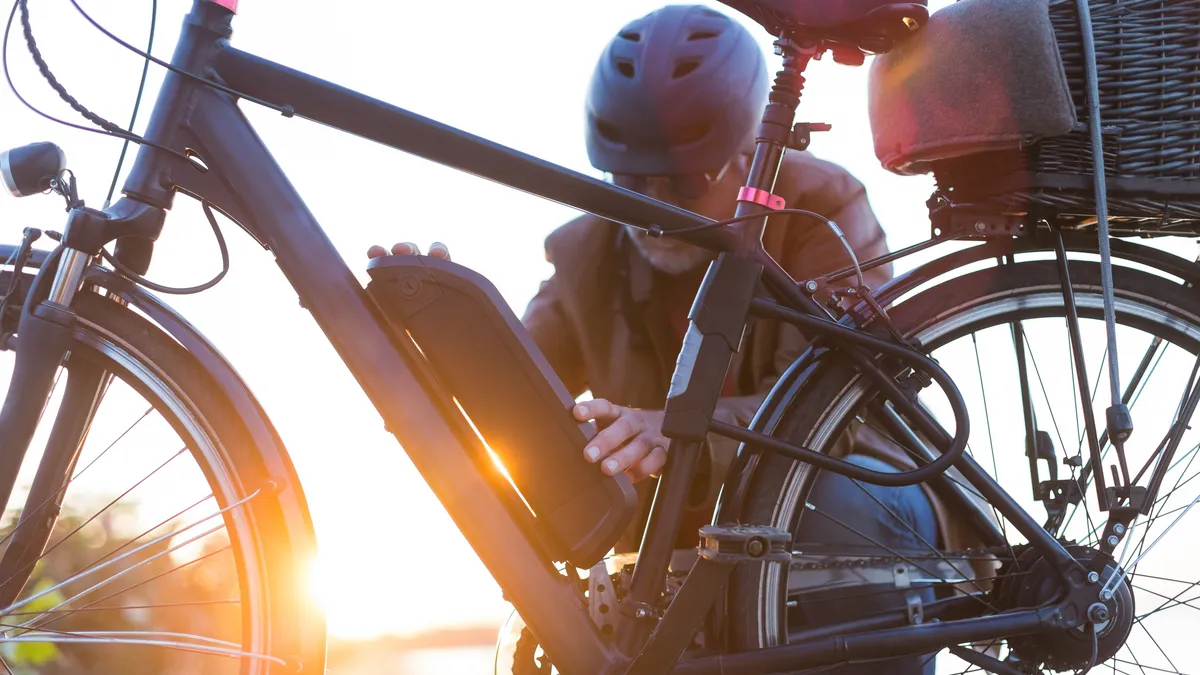If a city is thinking about implementing an e-bike rebate program, Denver’s chief climate officer, Grace Rink, has one piece of advice: “Oh, definitely do it. … Just go ahead and start,” she said.
The Mile High City has led the charge on rebates, with over 5,500 redeemed since its program launched last year. Now, other cities and states are establishing their own programs. Connecticut begins its e-bike incentive program June 28; Colorado starts a statewide initiative in August; and California will officially kick off its $13 million program later this year. In March, federal lawmakers proposed a new tax credit that could cover up to 30% of an e-bike purchase.
But cities shouldn’t wait for federal or state programs, Rink said. “If the city already has some level of program infrastructure already created, by the time they apply for federal money, they'll be better positioned to actually be selected to receive that additional funding,” she said.
Finding available funds is the biggest challenge for cities that want to start their own e-bike incentive programs, Rink said. Denver’s initiative is funded through a 0.25% sales tax voters approved in 2020. The sales tax raises $40 million a year for climate investments, with $3 million going to the e-bike rebate program, according to Rink.
According to a report published by the Denver city and county’s combined climate office, 4,734 first-year participants are replacing an estimated 100,000 car miles every week with e-bike miles, eliminating an estimated 1,450 metric tons of greenhouse gas emissions per year.
Tracking these figures is important, as e-bike rebates are still relatively new, said Dillon Fitch-Polse, a researcher at the University of California, Davis, who studies travel behavior and transportation policy.
“I think that we need to do creative things to get people to see bikes as viable transportation options,” he said.
Beyond reducing greenhouse gas emissions, these programs could promote a cultural shift where more people see biking as a viable method of transportation, Fitch-Polse said.
“We're not saying that every trip needs to be made on a bike, but maybe there's a third of your trips that could be made on a bike that you feel comfortable with,” he said.
Many cities are focusing on equity as part of their programs, with low-income residents receiving more money to purchase an e-bike. Cities should consider which goals they want to accomplish when setting rebate amounts, Fitch-Polse said. His research found that in Contra Costa County, California, many residents who were offered a $300 rebate purchased a $300 e-bike, he said.
“Rather than thinking about, ‘I want to buy a bike that's going to last,’ or ‘I'm really thinking about what's the right bike for me,’ it seems like they just saw, ‘$300 rebate, $300 e-bike, free e-bike,’” he said.
In contrast, residents of San Mateo County, California, were offered up to $800 to purchase an e-bike through Peninsula Clean Energy’s “E-Bikes for Everyone” program. Participants chose more expensive bikes that were more likely to last, Fitch-Polse said his research showed.
Many programs are balancing climate and equity goals by offering two tiers of benefit, one for all residents and one for low-income residents.
Denver sets aside half of vouchers for income-qualified participants and gives them $1,200 versus $300 for other participants. In addition, it offers the vouchers at brick-and-mortar locations where people can redeem them in person. Unlike tax credits or mail-in rebates, point-of-sale rebates are more accessible to people who can’t afford to pay the entire cost of an e-bike up front, Rink said.
As a side effect of Denver’s rebate program, prices of all types of e-bikes went down by an average of $500, Rink said. While the city initially offered an extra $500 to people buying an e-cargo bike, which can carry large loads, this year that bonus fell to $200, Rink said. So far, 48% of standard vouchers and 46% of income-qualified vouchers were used to purchase an e-cargo bike, Rink said.
“We do want to carry things around with us,” Fitch-Polse said. “And one of the barriers of bikes is that there's just not a lot of ability to do that.”
E-bike rebates alone may not be enough to get people out of cars and onto bikes, however. Concerns about road safety can be an additional barrier, researchers say.
“Not feeling safe when riding may disincentive riders from continuing to take their new e-bike out, which could negatively impact the goals of a rebate program,” said Ashley Seaward, director of state and local policy and sustainability lead at nonprofit PeopleForBikes, in an email. She recommended that cities prioritize building safe and connected bike networks in addition to offering e-bike rebates.
According to Rink, although Denver has added more cycling infrastructure in recent years, it’s not in direct response to the program, but part of Denver’s pre-existing plan to add bike lanes. While most of Denver’s bike lanes are currently unprotected, Rink is optimistic that the growing use of e-bikes will spur people’s interest in road infrastructure and safety.
Rink encourages cities that need help developing their own programs to ask the Denver climate office for guidance. “This program has at least restored some faith that people have in their government,” she said. “It is their tax dollars going back to them in a very tangible and beneficial way.”


















